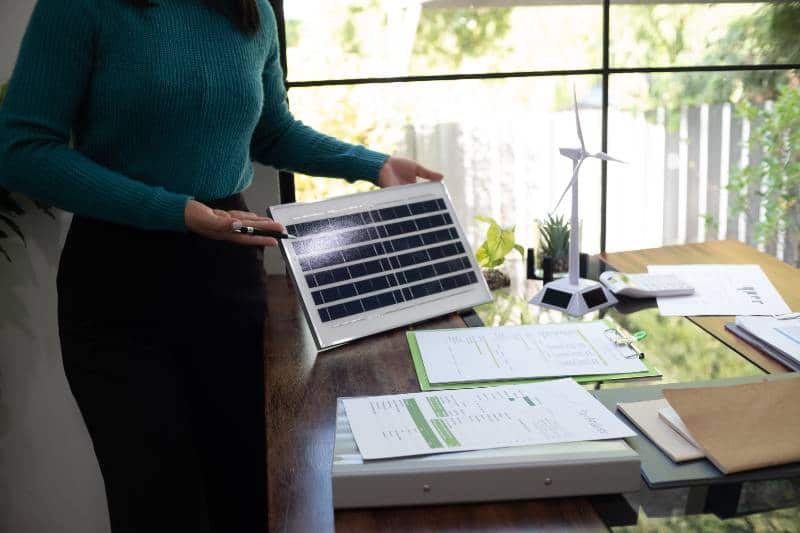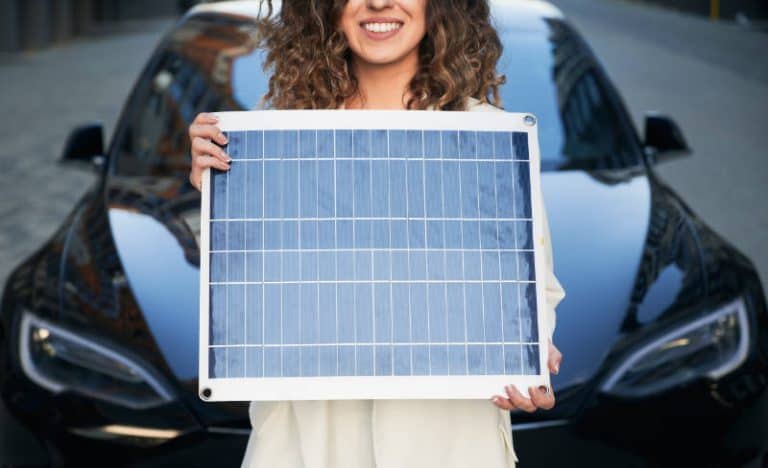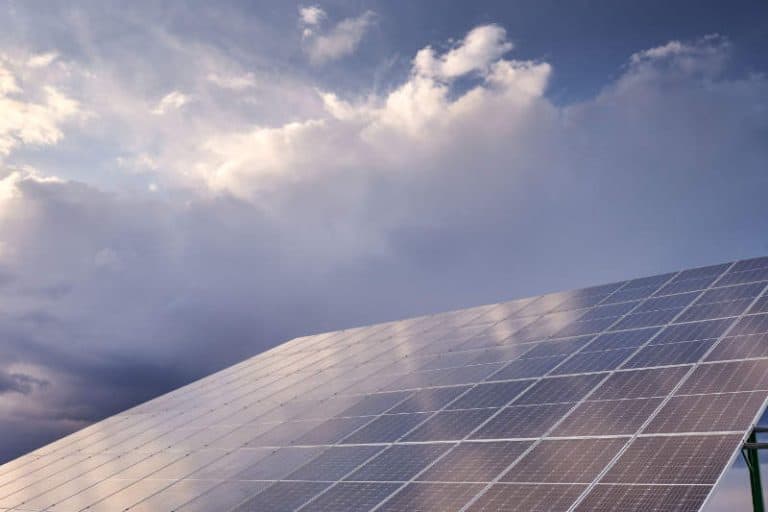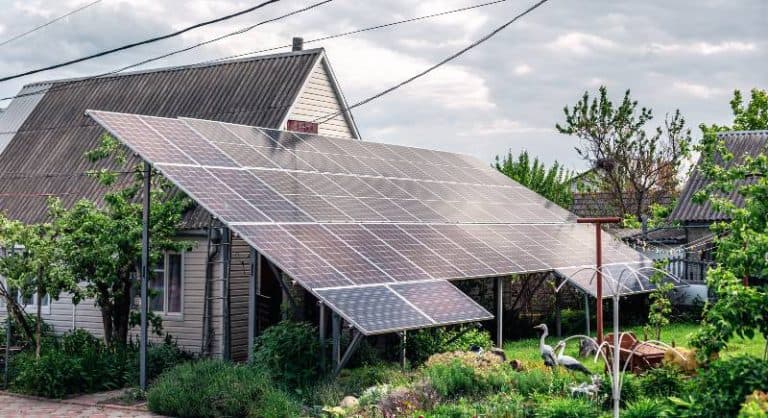The Dynamic Duo: Combining Wind and Solar Energy Power Systems
Are you interested in finding out how to maximize your energy efficiency while also reducing your carbon footprint? Combining wind and solar power is a great way to do just this. With the help of renewable energy sources like these, it’s possible to create an efficient, sustainable home that works in harmony with the environment. In this blog post, we’ll explore what makes this combination so effective and why more people are starting to turn toward wind and solar for their energy needs. By understanding the benefits of utilizing renewable resources, you can begin creating a system that works best for you and your family today!
The synergy of solar power and wind power ensures a reliable and uninterrupted energy supply for your home. Once installed, solar panels and wind turbines are seamlessly linked to a battery pack, effectively storing and delivering energy to power your household. This integrated system guarantees a sustainable and efficient source of electricity, empowering you to embrace a greener and more self-sufficient lifestyle.
Key Takeaways
- Combining wind and solar energy offers increased reliability, as one can compensate when the other is low, ensuring consistent power output.
- Integrated systems can be more cost-effective in the long run and contribute significantly to reducing carbon footprints.
- As technology advances, the integration of wind and solar for portable power will become more efficient, accessible, and widespread.
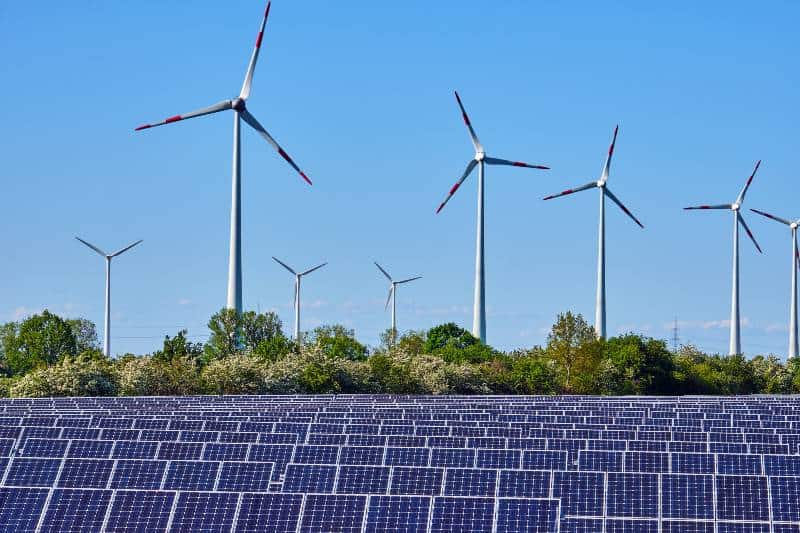
Understanding Wind Energy
When it comes to renewable energy, wind and solar power stand among the most prominent sources. By employing both together, we can maximize clean energy production, thereby decreasing the reliance on fossil fuels and reducing greenhouse gas emissions.
Wind energy harnesses the natural power of the wind to produce electricity.
How Wind Energy Works
- Wind’s Creation
Wind is generated by the uneven heating of the Earth’s surface by the sun. Warm air rises, and cooler air flows in to replace it, creating wind. - Energy Conversion
This wind is captured by turbines which convert kinetic energy into mechanical power. Wind turns the blades, which spin a shaft connected to a generator that produces electricity. - Power Distribution
Electricity is then transported via power lines to homes, businesses, and various industries.
Benefits and Limitations of Wind Energy
Benefits
- Renewable and Clean Source
Wind energy is a renewable resource, meaning it won’t run out as long as the wind continues to blow. Plus, it doesn’t release any harmful pollutants or greenhouse gases. - Cost-Effectiveness
Although wind turbines can be expensive to install, the cost has decreased over the years. Once installed, the energy produced is nearly free. - Energy Independence
Wind energy can be generated locally, reducing dependence on imported fuels and increasing energy security.
Limitations
- Intermittent Production
Wind energy production is dependent on wind speed. Therefore, energy generation can be inconsistent. - Approvals and Land Use
Getting necessary permits and approval can be difficult due to concerns about noise, aesthetics, and wildlife impact. - Initial Investment
The upfront cost for wind turbine equipment and installation can be high, accounting for a major part of total project costs.
In addressing the intermittent nature of wind energy, we can substantively benefit from solar energy’s potential. The complementary nature of these two resources can create a robust renewable energy solution.
Understanding Solar Energy
The sun provides an abundant, naturally replenishing source of power.
- Energy Conversion
Solar panels, or photovoltaic cells, convert sunlight directly into electricity. - Energy Use
This electricity can either be used immediately or stored in batteries for later use.
Benefits and Limitations of Solar Energy
Benefits
- Abundant and Renewable
The sun, an abundant and essentially inexhaustible energy source, means solar power is a renewable resource. - Clean and Environmentally Friendly
Solar panels produce clean, emission-free electricity. - Minimal Operating Costs
Once installed, solar panels require minimal maintenance and generate electricity virtually free of charge.
Limitations
- Depends on Weather
Solar energy harnessing is less effective on cloudy or rainy days. - High initial Costs
Installation of solar panels can be costly, although costs have significantly reduced over the years. - Space Needed
Solar panels require a lot of space for installation, which may not be available in urban or densely populated areas.
Wind & Solar: A Powerful Combination
Both wind and solar energy have their respective strengths and weaknesses. Their potent combination offers a unique solution to some of these limitations.
For instance:
- When it’s not windy, it may be sunny, and vice versa, ensuring a more consistent energy supply.
- Both technologies can share infrastructure such as land and connection to the grid, reducing overall costs.
To summarize, combining wind and solar energy offers a powerful solution to meet energy needs in an environmentally friendly and sustainable way.
Combining Wind and Solar Energy
Harnessing natural resources for power production, such as wind and solar energy, can provide sustainable, renewable, and clean solutions for our global energy needs.
Understanding Solar Energy
Solar energy is derived from the sun and can be transformed into various types of energy, including thermal and electrical.
How Solar Energy Works
- Solar Radiation
The process starts with sunlight – solar radiation. The photovoltaic cells in a solar panel, usually composed of semiconductor materials like silicon, absorbs the sunlight. - Energy Conversion
In these cells, sun’s energy knocks electrons loose from their atoms. When these electrons flow through the circuit, they generate electricity. This direct conversion of light to electric energy is known as the photovoltaic (PV) effect. - Energy Use
The generated electricity is then either used immediately or stored in a battery for future use.
Benefits and Limitations of Solar Energy
Benefits
- Renewable and Sustainable
Solar energy is a renewable and virtually inexhaustible source of energy, ensuring long-term sustainability. - Environmentally Friendly
Unlike fossil fuels, solar energy production doesn’t release harmful emissions or pollutants, making it clean and environmentally friendly. - Cost-Efficient
Despite high initial installation costs, solar power systems can save money in the long run due to very low running costs. Many regions also offer incentives and rebates that reduce installation costs.
Limitations
- Weather Dependent
Solar power generation efficiency drops on cloudy or rainy days. - High Upfront Costs
Initial setup and installation costs can be high, though these are offset by its low running costs over time. - Requires Space
Solar panel installations require adequate space, which can be a constraint in densely populated or urban areas.
Combining Wind and Solar Energy
Both wind and solar power are pillars of renewable energy sources, utilizing natural and abundant resources to provide electricity. When combined, these two renewable energy sources complement each other, creating a more sustainable and efficient solution to our energy needs.
The Synergy of Wind and Solar Energy
The interaction between wind and solar energy is the key to unlocking the potential of combined renewable power systems. This synergy mitigates some challenges faced by these renewable sources when employed separately.
Why Combining Wind and Solar is Beneficial
- Consistent Energy Production
Wind and solar power are intermittent and dependent on weather conditions. However, the fluctuating nature of the elements can be balanced out when both sources are combined, leading to more consistent energy generation. - Optimized Land Use
Wind and solar installations can co-exist on the same piece of land, leading to a more efficient use of space. This shared footprint reduces costs and minimizes environmental impact. - Reduced Infrastructure Costs
Combining wind and solar systems enables shared infrastructure, such as power lines, control systems, and monitoring devices. This lowers the installation, maintenance, and operational costs of the renewable energy system.
Real-world Examples of Combined Systems
- Hybrid Renewable Energy Parks in India
India’s Ministry of New and Renewable Energy (MNRE) introduced the concept of hybrid renewable energy parks, which combine large-scale wind and solar projects. For instance, the 41.5 MW Kavital Hybrid project in Karnataka combines 24 MW of solar and 17.5 MW of wind capacity. - Paimpol-Brehat Tidal and Solar Park, France
This project combines offshore wind turbines with solar arrays to make the most of the region’s wind and solar resources. As part of a pilot project, the solar panels float on platforms atop a tidal energy park – making efficient use of both wind and solar power. - Anzac Valley, Australia
The Kennedy Energy Park is located in Hughenden, Australia, an area with abundant wind and sunlight. It combines 43.5 MW of wind power with 15 MW of solar power, leading to more consistent energy generation.
These real-life examples showcase not only the effectiveness of combined wind and solar systems but also the promising future of renewable energy. The collaboration of these two energy sources can optimize the potential of each while reducing the impact on the environment and offering a cleaner and more sustainable solution to our global energy needs.
Portable Power Solutions
In a world that runs increasingly on electricity, the demand for flexible power solutions is on the rise. This demand has resulted in the development of portable power solutions that can provide electricity wherever and whenever it’s needed.
Introduction to Portable Power Systems
Portable power systems are compact, mobile devices that convert power stored in batteries into usable electricity. These systems are increasingly popular for outdoor activities like camping, picnicking, field reporting, or for emergency situations where grid power is unavailable.
These systems typically have built-in inverters that convert the DC electricity, stored in their batteries, into AC electricity. This AC power can be used to run a wide range of electronic devices, from mobile phones and laptops to lights and small appliances.
Integration of Wind and Solar Energy into Portable Systems
Given the intermittent nature of grid-based electricity in certain areas, and the global push towards greener solutions, portable power systems have started to leverage renewable energy sources. Solar and wind power can be efficiently incorporated into portable power systems, offering an eco-friendly and sustainable solution for on-the-go power needs.
Solar-Powered Portable Systems
Portable solar-powered systems typically use solar panels to harvest solar energy. This energy is converted into electricity and stored in built-in batteries for later use. Solar power banks and portable solar generators are common examples of these systems.
- Portable Solar Panels: Portable PV (photovoltaic) panels absorb sunlight and convert it into an electric current. These panels are typically foldable or rollable for easy transport and deployment.
- Solar Power Banks: These are compact devices that store electrical energy. They can be charged by connecting to a USB port or via built-in mini solar panels. They’re primarily used to charge handheld devices like smartphones and tablets.
- Portable Solar Generators: Despite their name, these devices do not actually generate power. They store power collected from either a wall outlet or solar panels and then release it as needed.
Wind-Powered Portable Systems
Wind power integrated portable systems are less common than solar, due to the less predictable nature of wind and the size limitations of wind turbines. However, they can still be utilized effectively in areas with consistent wind to provide a portable power solution.
- Portable Wind Turbines: Compact wind turbines can be mounted on vehicles or temporary structures to generate electricity from wind. Combined with an integrated battery, this system can store electricity to power devices when needed.
Hybrid Portable Power Systems (Wind and Solar)
Some portable power systems integrate both solar and wind energy. These hybrid systems ensure that power can be produced regardless of the weather condition. For instance, when sunlight may be low or non-existent, wind can oftentimes still successfully produce energy, and vice versa.
Benefits of Combining Wind and Solar for Portable Power
Leveraging the advantages of both wind and solar energy, portable power systems provide an eco-friendly and reliable on-the-go power solution. By combining these renewable energy sources, numerous benefits can be achieved, including enhanced reliability, reduced environmental impact, and cost savings.
Increased Reliability and Efficiency
Pairing wind and solar energy offers a unique advantage in terms of reliability. Individually, these energy sources exhibit variability due to weather-dependent fluctuations. However, when combined in a portable power system, their strengths complement each other:
- Balanced Energy Production: Solar and wind generation often have an inverse relationship, with sunlight being stronger when the wind is weak and vice versa. As a result, this reduces the chances of total power loss and ensures enhanced reliability.
- Consistent Power Supply: The combination of wind and solar energy allows for continuous energy production throughout the day and night, offering a more consistent on-the-go power supply.
- Optimal Energy Storage: With both sources producing energy at different times of the day, the portable system’s integrated battery can be continuously charged, maintaining an optimal energy storage level.
Environmental Benefits
Combining wind and solar energy in portable power systems offers a cleaner and more sustainable solution for our mobile power needs:
- Reduced Carbon Footprint: As both solar and wind energy are renewable and produce no emissions during operation, they help minimize the carbon footprint associated with traditional electricity generation from fossil fuels.
- Reduced Dependence on Non-renewable Resources: With a hybrid renewable system, the demand for non-renewable resources such as oil, coal, and natural gas can be reduced, contributing to environmental sustainability initiatives.
- Less Waste Production: Utilizing renewable energy sources increases the lifespan of batteries used in portable power systems, resulting in less frequent battery disposal and consequently lesser harmful e-waste.
Cost Savings
Integrating wind and solar energy into portable power solutions presents a cost-effective approach to mobile electricity needs:
- Low Operational Costs: Renewable energy sources, once installed, have low operational costs. The primary cost associated with hybrid portable power solutions comes from the initial purchase of the equipment and, in some cases, maintenance. Over time, the savings on fuel and electricity bills can make these portable systems more cost-effective than traditional portable generators.
- Long-term Savings: As renewable energy technologies become more advanced and accessible, their costs continue to decrease, making wind-solar portable power systems an increasingly economically viable option.
- Reduced Maintenance Expenses: Renewable energy-based systems tend to have low maintenance requirements, as they have fewer moving parts compared to traditional generators. This can lead to further cost savings over the lifetime of the system.
The integration of wind and solar energy into portable power systems offers increased reliability, environmental benefits, and cost savings. Their complementary nature allows for enhanced electricity generation, fostering a more sustainable and eco-friendly solution for portable power requirements.
Challenges and Considerations
While combining wind and solar energy into portable power systems offers notable benefits, it also presents its own set of challenges. These can broadly be classified into two categories: technical challenges related to the integration of these systems, and environmental and geographical considerations that can impact their effectiveness.
Technical Challenges in Integration
- Intermittency of Power Sources: Wind and solar power are inherently intermittent, meaning they are not available all the time. Solar power can only be produced during the day and is affected by cloud cover, whereas wind power relies on sufficient wind speeds, which can fluctuate greatly even in traditionally wind-rich areas.
- Power Management Issues: Managing and balancing the power from two different sources can be challenging and may require sophisticated control systems. These systems must continuously monitor and adjust the power input from both the solar and wind systems, ensuring neither overloads the system nor causes it to underperform.
- Battery Storage: Both solar and wind energy need to be stored effectively in batteries when the sources aren’t generating power. Storage technology is getting better; however, high-capacity batteries can often be expensive and add to the overall cost and bulk of the portable system.
- Cost and Complexity of Design: Designing and manufacturing portable power systems that can effectively harness and convert both solar and wind energy can be complex and costly. This can make these hybrid portable power units more expensive than their single-source counterparts or conventional portable generators.
Environmental and Geographical Considerations
- Geographical Location: Both wind and solar energy rely heavily on location-specific conditions. Not all regions are ideal for harnessing both types of energy. While some areas might receive ample sunlight, they may have minimal wind and vice versa.
- Environmental Impact: Although less polluting than fossil fuel-based sources, wind and solar installations do have an environmental footprint during the manufacturing and transportation processes. Additionally, full lifecycle considerations, such as disposal and recycling at the end of the devices’ lifespan, should also be taken into account.
- Weather Conditions: The performance of solar panels and wind turbines can be negatively impacted by certain weather conditions. For instance, heavy snowfall can hinder the operation of solar panels, and very high wind speeds may result in the shutdown of wind turbines for safety purposes.
Conclusively, while the combination of wind and solar energy in portable power systems is a promising solution for sustainable power, these challenges and considerations should be thoroughly evaluated and addressed. This will not only enhance the scope and application of such systems but also accelerate our transitions towards a more eco-centric approach to our energy needs.

Combining Wind and Solar Energy FAQs
Are there any geographical limitations to using these systems?
There can be geographical limitations when it comes to harnessing both wind and solar energy. Ideally, these systems work best in areas with ample sunlight and sufficient wind speeds. However, advancements in technology have made it possible for these systems to be used in a wider range of locations. It is essential to consider the specific conditions of each location before implementing a hybrid renewable energy system.
How environmentally friendly is a combined wind and solar system?
While the manufacturing and transportation processes of wind and solar installations do have an environmental footprint, these systems are still significantly more eco-friendly than traditional fossil fuel-based sources. Additionally, with proper disposal and recycling measures in place, the overall environmental impact can be minimized.
What are the main challenges in integrating wind and solar for portable power?
The main challenges in integrating wind and solar energy into portable power systems include managing the intermittency of these sources, balancing power inputs from two different sources, effectively storing excess energy, and the added cost and complexity of design compared to traditional portable generators. Additionally, geographical limitations and weather conditions can also pose difficulties in the effectiveness of these systems.
Can I set up a combined system for my home or business?
Yes, combined wind and solar systems can also be implemented for residential and commercial use. However, it is crucial to consult with an expert or conduct a thorough evaluation of your location’s specific conditions before implementing such a system. Additionally, proper maintenance and monitoring are essential to ensure optimal performance and energy efficiency over time.
How does weather impact the efficiency of these combined systems?
Weather conditions such as heavy snowfall or very high wind speeds can negatively impact the performance of these systems. In some cases, extreme weather conditions may even result in temporary shutdowns for safety purposes. However, advancements in technology and proper maintenance can help mitigate potential issues caused by adverse weather conditions.
Conclusion
Wind and solar power are a perfect match to produce reliable, green energy. Combining both technologies enables a more reliable form of energy that contributes to reducing carbon footprints and is cost-effective over the long term. As advancements in technology occur, we will be able to tap into more efficient, integrated energy systems from the convenience of our own homes.
It is easy to get overwhelmed by the enormity of transitioning to clean energy but with small steps like signing up for the Electrik Living News’ newsletter, you can learn tips for a more sustainable lifestyle at your fingertips. Our future depends on changing our approach when it comes to green energy and together with the advancements in technology, combining wind and solar could be the key to unlocking a comfortable and bright sustainable future.
